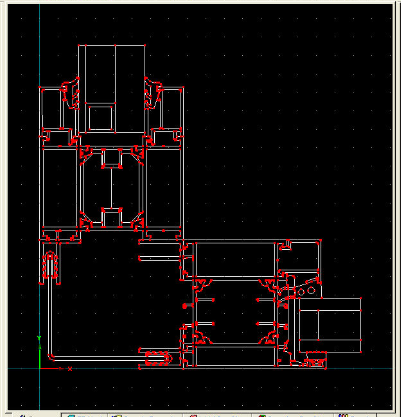Background Layers are geometrical objects that can serve as a template for defining the transport domain. A Background Layer consists of nodes and curves that are not part of the transport domain, but its components can be used to define the transport domain. A Background Layer is usually read from the DXF file (AutoCAD). An example of a very complex Background Layer (unrelated to hydrology) read from the DXF file is given below.

The project may have at the same time multiple Background Layers (virtually any number) and their visibility can be turned on and off using the View Tab at the Navigator Bar (Auxiliary Objects -> Background Layers). Background Layers are displayed in the View window using suppressed (less intense) colors, so that they do not visually disturb when objects of the geometry are being defined. The intensity of display and other parameters can be set in the Display Options dialog window (the Menu command Options->Display Options->Edit). If the location of the template (background layer) is not satisfactory, it can be Moved, Rotated, Mirrored, Stretched, and/or Skewed as needed.
The following commands are available to edit Background Layers.
Return to Edit Menu.